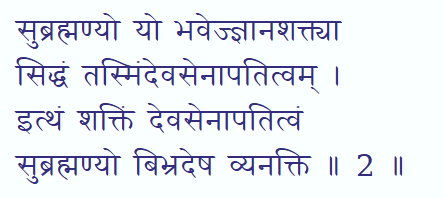Continuing our study on the Harikatha by Smt Sharada Gannavaram, we are now going to focus on the 4th deity in the Shanmata (6-deity) pantheon- i.e. Lord Shiva.
As mentioned in the previous articles, this harikatha is unique because all the verses are taken from compositions by the 34th acharya of Sringeri - Sri Sri Chandrashekhara Bharati mahaswami.
Resolving the "samasya", the riddle:
Mahaswami's guru, the 33rd acharya of Sringeri, gave out a puzzle, a "samasya" that had to be solved by the paathashaala students. He rendered a quarter of a verse in Sanskrit that said- "We are unsure if it is awake or if it is asleep (nidraati vaa...jaagarti vaa?). But it is still an expert in bestowing mukti (mukti daana nipunaa)". He left the verse hanging. This was the puzzle, the samasya. The students had to use their imagination to complete the verse and explain this strange phenomenon!
Once the acharya was back from his yatra, he asked if anyone had solved this puzzle. The 34th acharya, who at this point in time, was still a youngster, had completed the verse. He incorporates the above verse quarter in a stanza describing Lord Shiva as Dakshinamurti. He describes the Lord in the following manner. He is seated under a banyan tree (vata vrksha) and holds a sacred book (pustaka) in one hand. The other hand is held in "chin-mudra"- with the thumb touching the index finger. This deity teaches his devotees through silence (mauna-vyaakhyaa). And surprisingly, this teaching in silence, is so powerful, that it gives liberation (mukti) to the students! Hence, "mukti-daana nipunaa", such an expert teacher!
Further, the acharya says, that when we look at Dakshinamurti's eyes, they are half-closed. They are neither fully open, nor fully shut. Hence, we feel like asking, "Is he awake or is he sleeping?"
Thus, in a masterly way, the acharya solves the riddle using the imagery of Lord Dakshinamurti. The beauty of this verse, as completed by the acharya, is such that, he does not mention the name "Dakshinamurti" anywhere. Through the imagery of the pustaka in one hand, chin-mudra in the other, he paints a word picture, and leaves the inference to us, so that we are sure it has to be Lord Dakshinamurti and none else!
Needless to say, his guru, the 33rd acharya, was extremely pleased with his disciple for solving the "samasya" in such a novel and beautiful way!
Gireesha stuti
Next, we come to a set of verses composed by the 34th acharya called "Gireesha stuti". As the name suggests, these are verses on Lord Shiva who is "Gireesha", the Lord (eesha) of mountains (giri), the Lord of Kailash. In this composition, we find a description of every part or aspect (avayava) of Lord Shiva, from the head to the toe. Some of the descriptions are given below:
Lord Shiva's Ganga-pravaaha:
Talking about Ganga on Lord Shiva's head, the acharya says, this ganga pravaaha is not just the Ganga river. In fact, this is the torrent of compassion, O Lord, tava karunaa-pravaaha....that gushes forth and drenches the devotee completely!
What is this karuna-pravaaha? Lord's compassion can express itself in several ways- it can solve a particular problem that the devotee may have. However, it is said, that the best form of compassion, is the teaching tradition coming down from Lord Shiva (sadaashiva samaarambhaam). This teaching bestows knowledge, such that, it does not solve one specific, topical problem of the student, but solves all problems...for all time. This is the karunaa-pravaaha emanating from Lord Shiva.
Lord Shiva's trishula:
Next, he focuses on the trident, "trishula" carried by Lord Shiva. The acharya says, the trident, with its 3 prongs refer to "taapa trayam". We are afflicted with problems (taapa) at 3 levels: problems centred on us (our body-mind related problems), problems afflicting our immediate neighbourhood (e.g. family related issues) and problems emanating from afar, i.e. supernatural forces like earthquake and tsunami that afflict the world at large. Lord Shiva holds a trident to show that he will protect us at all 3 levels.
We may wonder how Lord Shiva can protect us from all 3 calamities. In some cases, the problem melts away, in some cases, the impact of the problem is lessened...and in some other cases, he gives us the necessary mental strength to go through the crisis with cheer and confidence.
Lord Shiva as mrga-dhara:
Lord Shiva's nuupura:
Finally, the acharya comes to the feet of Lord Shiva. Shiva is "naagendra bhushana". Snakes are his ornaments. Shiva wears the snake around his neck. In fact, his entire body is decorated with snakes. Here, the acharya says, Shiva wears the snake "Adishesha" as his "nuupura" (anklet).
What does this mean? We are supported by the earth. The earth is supported by Adishesha. In the puranas, we read how the hoods of Adishesha support the world (dharani-dharah). By wearing Adishesha as his anklet, the acharya says, Lord Shiva supports even Adishesha!
There is an "associative property" here- we are supported by the earth, the earth is supported by Adishesha, and Adishesha is supported by Lord Shiva. Through this, we understand that the "ultimate supporter" is Lord Shiva.
Hence, we are never isolated and alone. We are ever supported by the Lord. And as the supporter, he takes care of all our problems- "bhava bhaaram cha vahasi". We see in the Geeta also- "yoga-kshemam vahaamyaham" where the Lord says, "I take care of all your needs!"
With this, we pray to the acharya and to Lord Shiva for their grace.
May Lord Shiva's compassion, karuna-pravaaha drench us. May we surrender to him and feel that he bears all our topical problems. And finally, we ask Lord Shiva for that ultimate teaching, through which he solves all problems...for all time!




